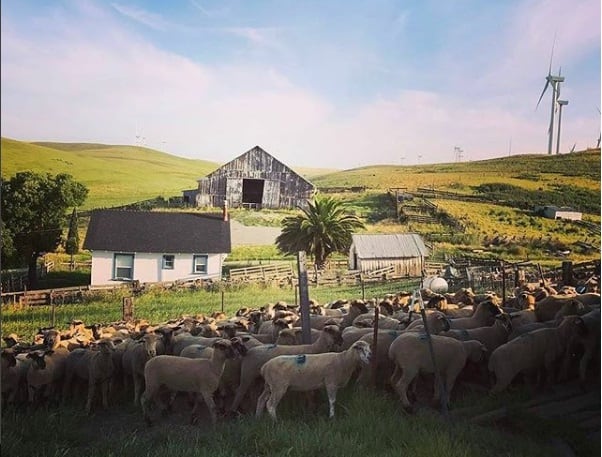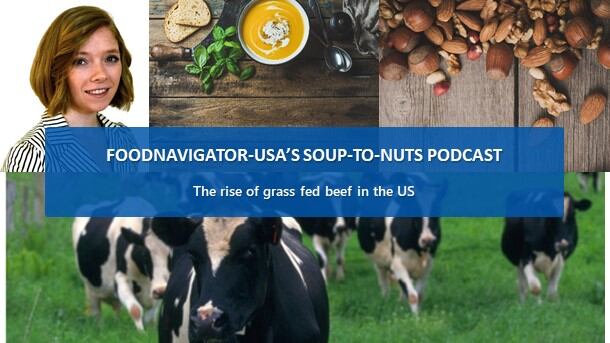“Americans on average eat 60 pounds of beef per year, almost 100 pounds of chicken and 50 pounds of pork per capita, and [lamb] is weighing in at 1 pound. So, we are really tiny … but we are seeing an uptick” that we expect will continue to grow in coming years as more consumers become familiar with lamb, how to prep it and learn about its sustainability and positive environmental impact, Anders Hemphill, vice president of marketing and brand strategy at American lamb brand Superior Farms, told FoodNavigator-USA.
He explained that the current increase in consumer interest in lamb can be attributed in part to millennials who tend to have “a little bit more of an international world view and tend to seek different types of protein, different types of cuisine and so may be a little more adventurous in terms of what they are eating.”
In addition, he noted the “evolution of people’s interest in cooking at home as seen in everything from culinary magazines, like Food & Wine and Bon Appetit, to the many cooking shows that there are have also benefited lamb” by helping to reduce the intimidation that can come with preparing an unfamiliar – and more premium – ingredient.
These outlets also are showing Americans that there are other economical cuts of lamb and ways to prepare the protein, such as burgers or meatballs, that are less expensive than a rack of lamb, he said. This is making lamb attainable on a Wednesday night and not just the holidays, he added.
Nutritional benefits of lamb boost sales
Lamb also has benefited from consumer interest in eating healthier, Hemphill noted.
“If you look at a really great steak, you have all that marbling, which is basically fat, but it is also what delivers the great taste and eating experience consumers want,” Hemphill said. Lamb, on the other hand, “doesn’t fatten the same way. … It tends to fatten on the outside where the fat is trimmed away. But because lamb is naturally tender you don’t need to rely on the fat to deliver a tender eating experience.”
In addition, because a three-ounce serving of lamb has only 175 calories, it qualifies as a lean protein by government standards – potentially giving consumers more permission to eat it, he said.
Lamb industry addresses animal welfare and sustainability concerns
Because lamb is a much smaller market in terms of supply and demand than other animal protein sources in the US, it does not have the same animal welfare challenges that factory farmed beef, chicken and poultry are struggling to address, Hemphill said.
Rather, the industry mostly revolves around many of the standards that consumers now want to see – such a free ranging and grass-fed.
“We work with 1,000 family ranchers throughout the Western United States and we help bring their lambs to market and a lot of them are grazing out in the open in National Forest lands or they are in vineyards or they are passing through crop fields after the harvest to help clean up those fields – all of which also speak to the sustainability of the lab industry,” Hemphill said.
He added by grazing in forests and vineyards, lambs help keep low grasses that pose fire hazards. At the same time, they save farmers from having to burn fossil fuels to run tractors to mow grass or further clean crop fields.
“They also are turning the soil with their feet as they are going, they are keeping pests, insects and things like that minimized and they fertilize as they go. From that standpoint, there are some interesting stories about how lambs can really be a part of the entire eco-system in a biodiverse way,” Hemphill said, adding, “We are excited about the sustainability of lamb and really think of them as part of the natural landscape.”
Beyond the animals, the industry also strives to preserve natural resources, Hemphill said, noting that Superior Farms uses wind turbines and solar panels to produce 95% of the energy consumed at its Dixon, Calif., plants.
The industry also continues to innovate to improve the sustainability of lamb production and meet consumer demands around animal welfare and safety, Hemphill said.
For example, he said the industry is researching genetics to help breed lambs that are more resistant to disease to reduce the use of antibiotics. Another strategy in this space that the industry is exploring is the use of probiotics, which have shown promising returns in keeping animals healthy.
Finally, Hemphill said, Superior Farms prides itself of limiting waste by using 98% of every lamb that comes through, whether that is food for people and pets or clothing.
“Every single part of that animal is used and put to good use, and we continue to strive to push that as far as we can,” he said.
Addressing lingering challenges
Despite all the benefits of lamb and the trends it checks, Hemhill acknowledged the industry has a long way to go still.
In the coming years, Hemphill said Superior Farms plans to boost its outreach to consumers through social media and in store demos.
“Really our mantra is about education and inspiration. So, how can we show consumers that lamb is nutritious, easy to prepare and delicious,” he said. “One way we are doing that is by doing recipe videos and pushing out social media content to give people ideas about what they can do with lamb that is not just a fancy rack of lamb.”
In addition, he said, “we have really focused on sampling in stores in the West Coast this year and we will be expanding that nationwide next year. So, when you are going to the supermarket and … and we can put a tasty bite in someone’s mouth and educate them about how easy and delicious this can be – and how accessible – we drive sales.”


